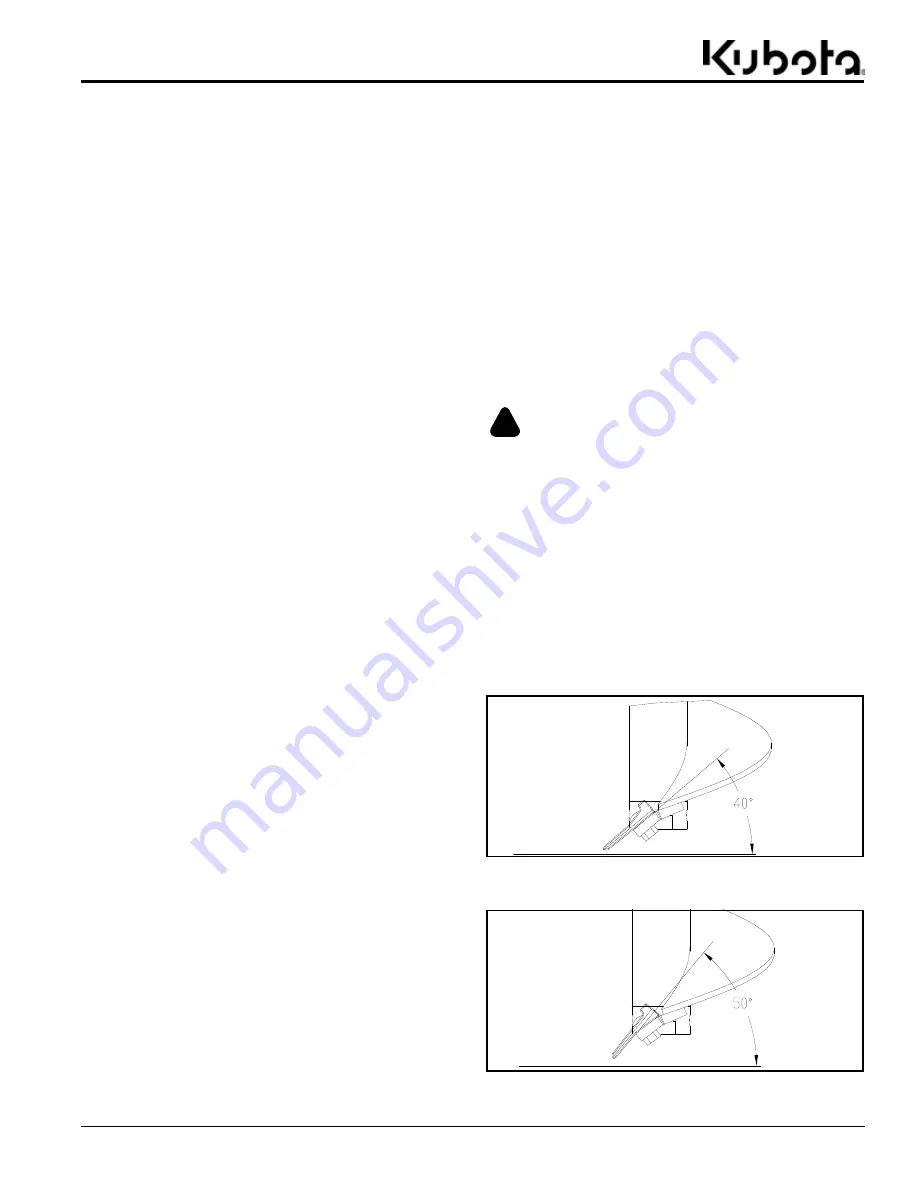
Section 2: Operating Procedures
Table of Contents
4/9/19
AP-SA35 Hydraulic Post Hole Digger 317-093MK
15
•
Always shut power machine down following the “Shutdown
Procedure” provided in this manual before leaving the
operator’s seat.
•
Do not travel across inclines where equipment could slip or
roll-over. Consult your power machine Operator’s Manual
for acceptable inclines they are capable of crossing.
•
Backup alarm must be in good working order to warn
others. Use a backup camera or rear-view mirror that is in
good condition to help see undesirable situations behind the
unit. Drive at a slower speed to compensate for blind spots.
•
Never carry riders on the implement or power machine.
Riders can obstruct the operator’s view, interfere with
control of the equipment, be pinched by moving
components, become entangled in rotating components, be
struck by objects, be thrown or fall from the equipment, etc.
•
Hydraulic fluid under high pressure can penetrate the skin
and/or eyes causing a serious injury. Wear protective gloves
and safety glasses or goggles when working with hydraulic
systems. Use a piece of cardboard or wood rather than
hands when searching for leaks. A doctor familiar with this
type of injury must treat the injury within a few hours or
gangrene may result. DO NOT DELAY.
•
Check hitch fit-up frequently. An improper fit-up can cause
the attachment to come loose from the loader hitch plate
and fall.
•
Operate only power machines equipped with a certified
Roll-Over Protective Structure (ROPS) and seat belt.
Fasten seat belt snugly and securely to help protect against
serious injury or death from machine overturn.
•
Always travel with adequate clearance between ground and
auger. Hitting an object while traveling can damage
equipment and cause operator to lose control.
•
Always travel with attachment lowered to reduce the
chances of tip over due to high center of gravity.
•
Do not install a bolt that is longer than what was originally
supplied with the auger. Protruding hardware is more likely
to entangle a bystander by catching on loose clothing.
•
This attachment has a 3500 psi maximum hydraulic
pressure rating. Make sure your powered machine’s
hydraulic pressure to this attachment does not exceed 3500
psi. Exceeding this rating can result in equipment damage,
serious injury, or death.
•
Do not use attachment to lift, carry, push or tow other
equipment and objects. It is not properly designed or
guarded for this use. The operator could lose control and
cause a tipping hazard.
•
Never adjust tractor pressure relief valve for a pressure
rating higher than what is recommended by the tractor
manufacture.
•
Protect freshly dug holes immediately after digging by
filling it with a post, covering the hole with a cover capable
of supporting a person, or place a physical boundary
around the hole to stop entry into the area.
•
Do not use post hole digger to wrap wire or any other items.
Doing so can result in bodily injury and/or damage to the
equipment.
•
Never work near utilities such as gas lines, electrical lines,
or other hazards that can cause serious injury or death from
electrocution, explosion, or fire.
•
Never make contact with underground utilities such as
electrical power lines, gas lines, phone lines, etc. They can
cause serious injury or death from electrocution, explosion,
or fire. If in doubt, call 811 (USA) before digging so that
they can mark the location of underground services in the
area. For contact information, see Dig Safe in the
“Important Safety Information” starting on page 1.
•
Avoid exposure to dust containing crystalline silica
particles. This dust can cause serious injury to the lungs
(silicosis). Because crystalline silica is a basic component
of sand and granite, many activities at construction sites
produce dust containing crystalline silica. Trenching,
sawing and boring of material containing crystalline silica
can produce dust containing crystalline silica.
CAUTION
!
To avoid minor or moderate injury:
Auger tip gets hot after digging. Allow time for the tip to cool
before touching or servicing the tip.
Dual-Angle Teeth
Refer to Figure 2-1 & Figure 2-2:
The Auger is shipped with teeth mounted at 40 degrees
(see Figure 2-1). If you are experiencing difficulty in
penetrating the soil, they can be turned over and
mounted at 50 degrees (see Figure 2-2) for a more
aggressive bite. Be sure to tighten all mounting hardware
to the proper torque when securing teeth to the Auger.
See
“Torque Values Chart for Common Bolt Sizes”
on
page 27 for torque ratings.
Auger Teeth Mounted at 40 Degrees
Figure 2-1
Auger Teeth Mounted at 50 Degrees
Figure 2-2
25598
25598































